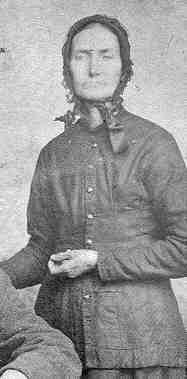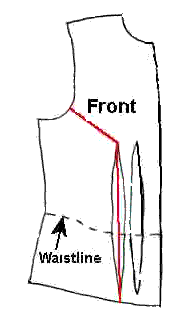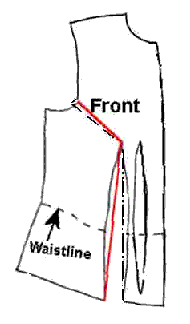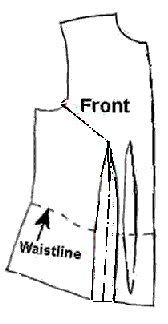|
Adjusting the Armscye
Sometimes- especially with those ladies with larger differences between waist and bust
measurements, it will be essential to adjust the armscye length.
Compare the armscye measurement you took during the measurement process to the armscye measurement of your basic
sloper. If it is between 1-2.5 inches some adjustments will likely need to be made. (If it is larger than 3"
you may need to slope the shoulder seams down as well.) The same is true if you normally wear a size C-D cup bra
or larger. As a general rule the bigger the dart the more fullness allowed (usually people think of the opposite
being true).
Since it is NOT appropriate in this era to take a dart that fits in from the armhole, we will need to adjust the
pattern to allow for the extra fullness. This is actually fairly easy to accomplish by a slash and rotate method.
This will give you the "French dart", referred to in lesson
1.
| If you have been looking through patterns from the period you will likely notice several
of them have a one larger dart. Darts made in this method leave more fullness or roundness to the bust area. When
observing period pattern shapes you will notice they are usually made to an "ideal, corseted" shape,
or the hourglass figure and will look something like this adjusted shape- side seam sloping outward with the outside
dart wider than the inside. You will also notice in some photos ladies who were straighter up and down often had
an unsightly vertical wrinkles at the bustline. This is often caused by this dart being too large. |

|
Lesson 2 - Page 9
Site Index
Page 1- 2 - 3 - 4 - 5
- 6 - 7 - 8 - 9 - 10
|



